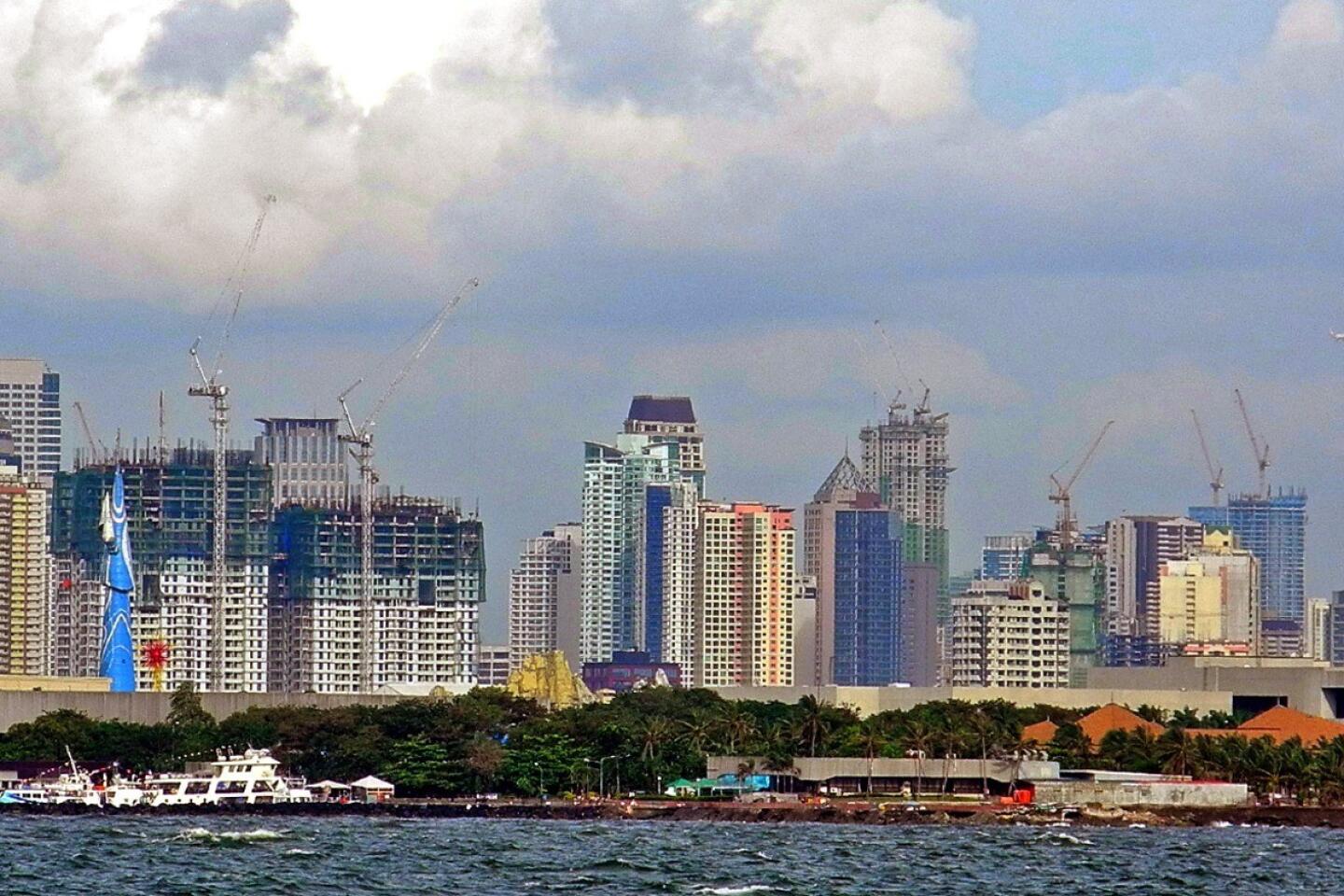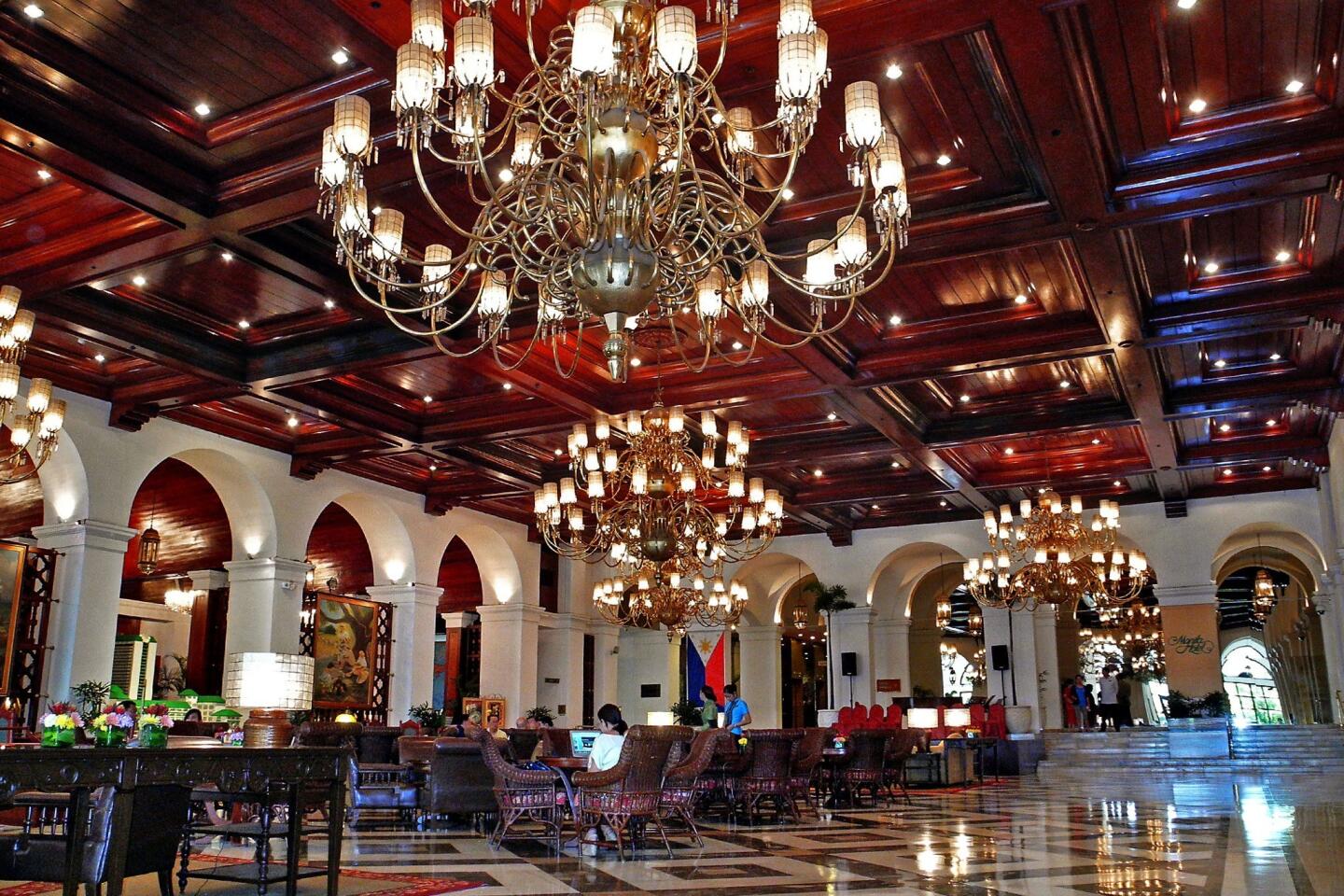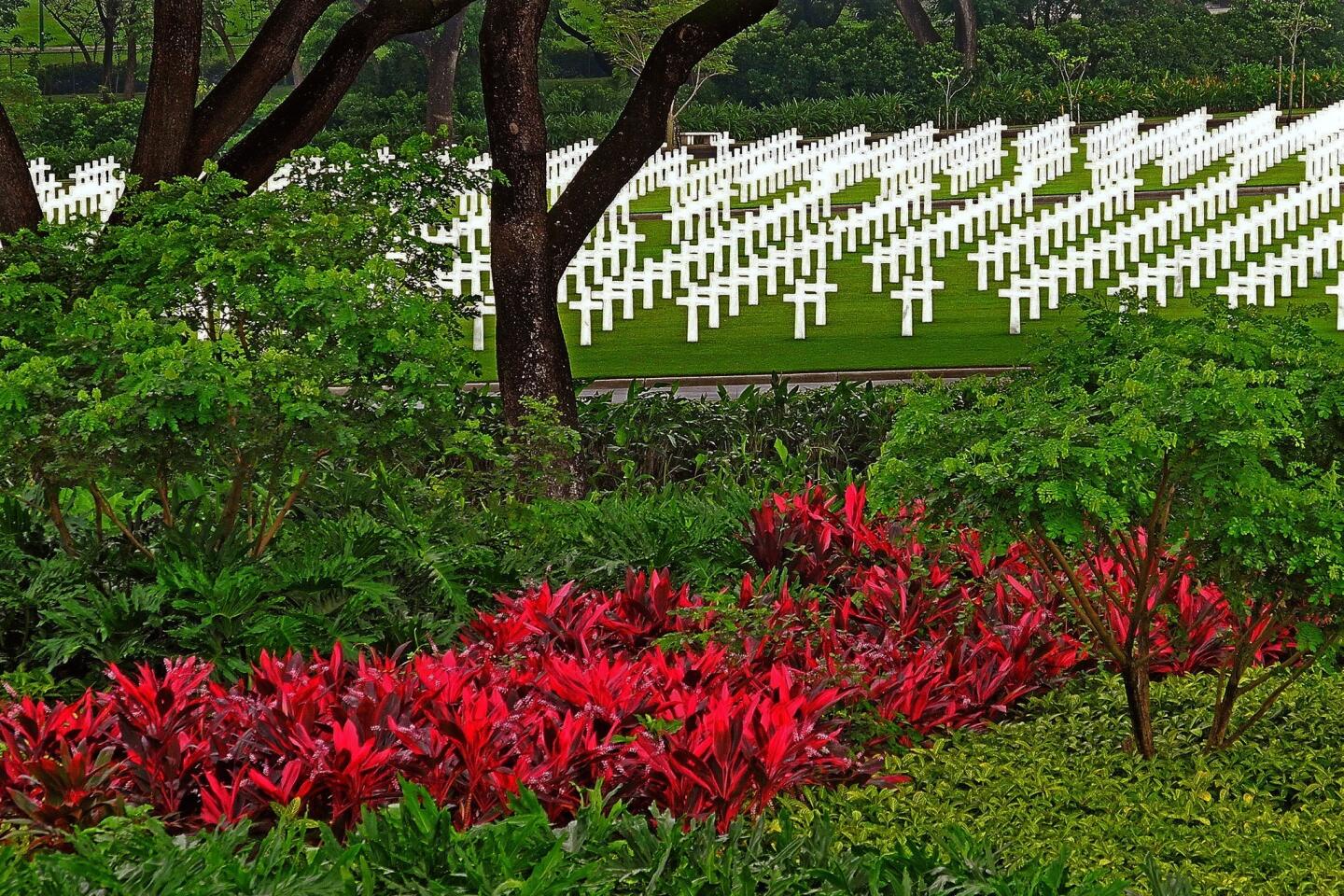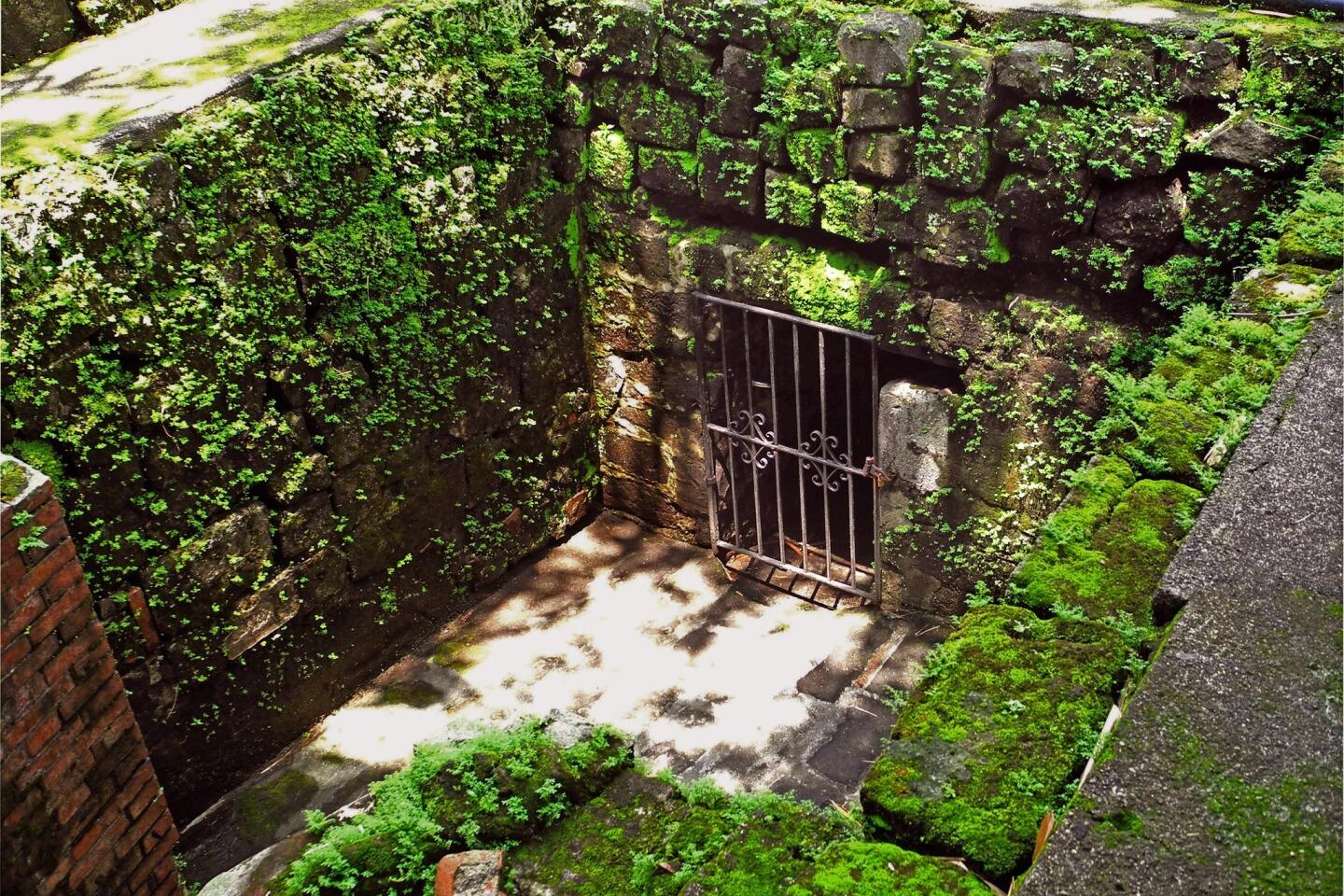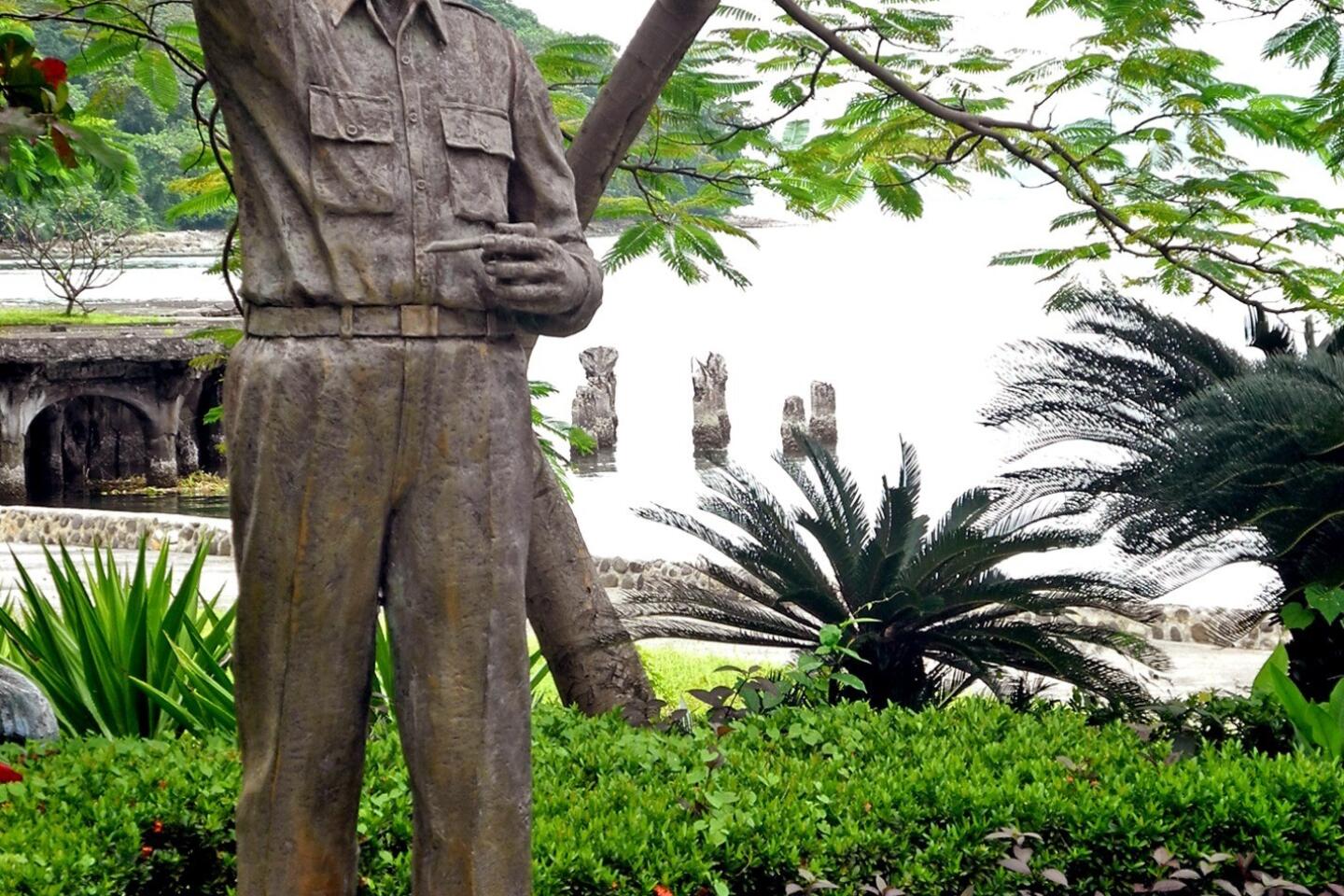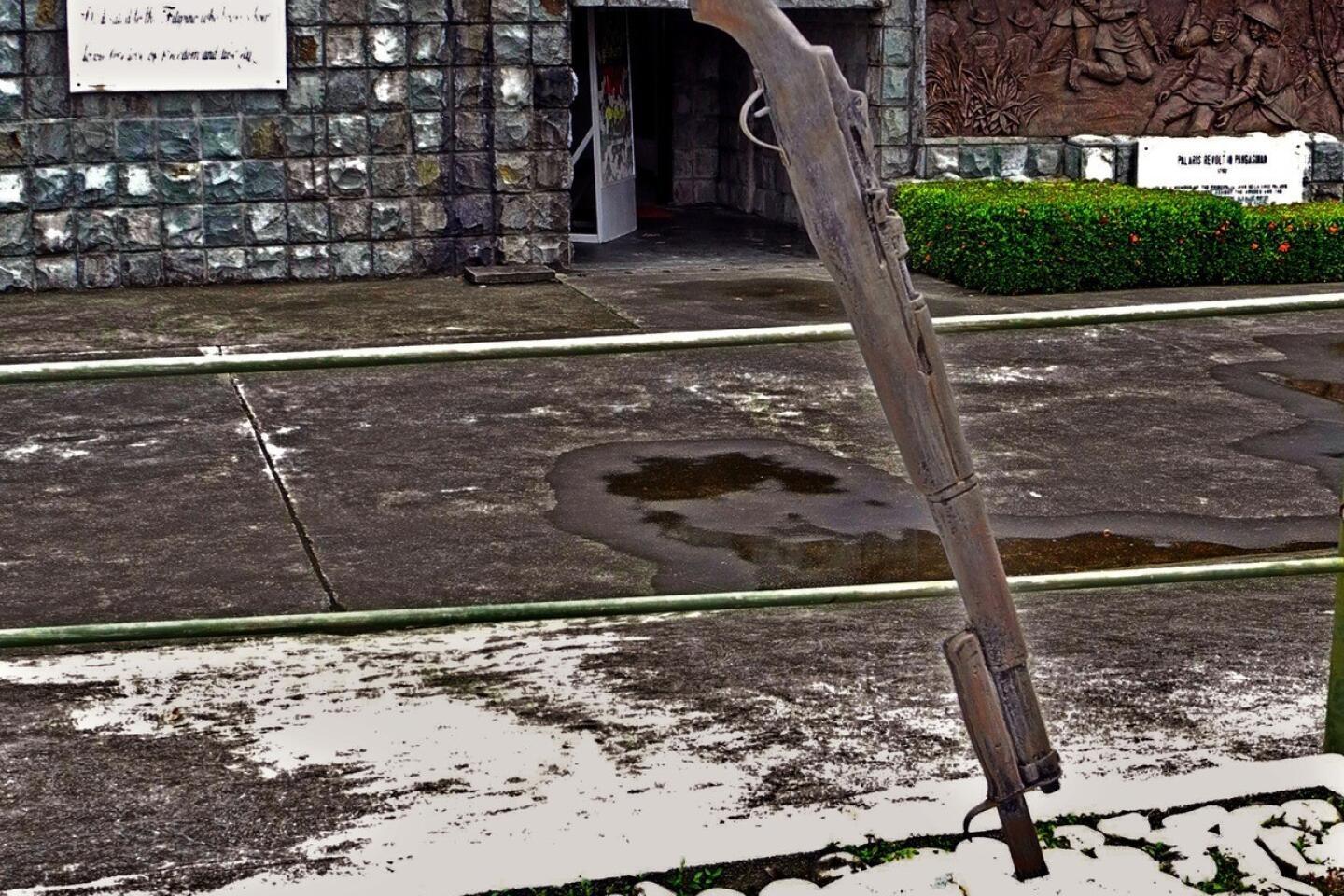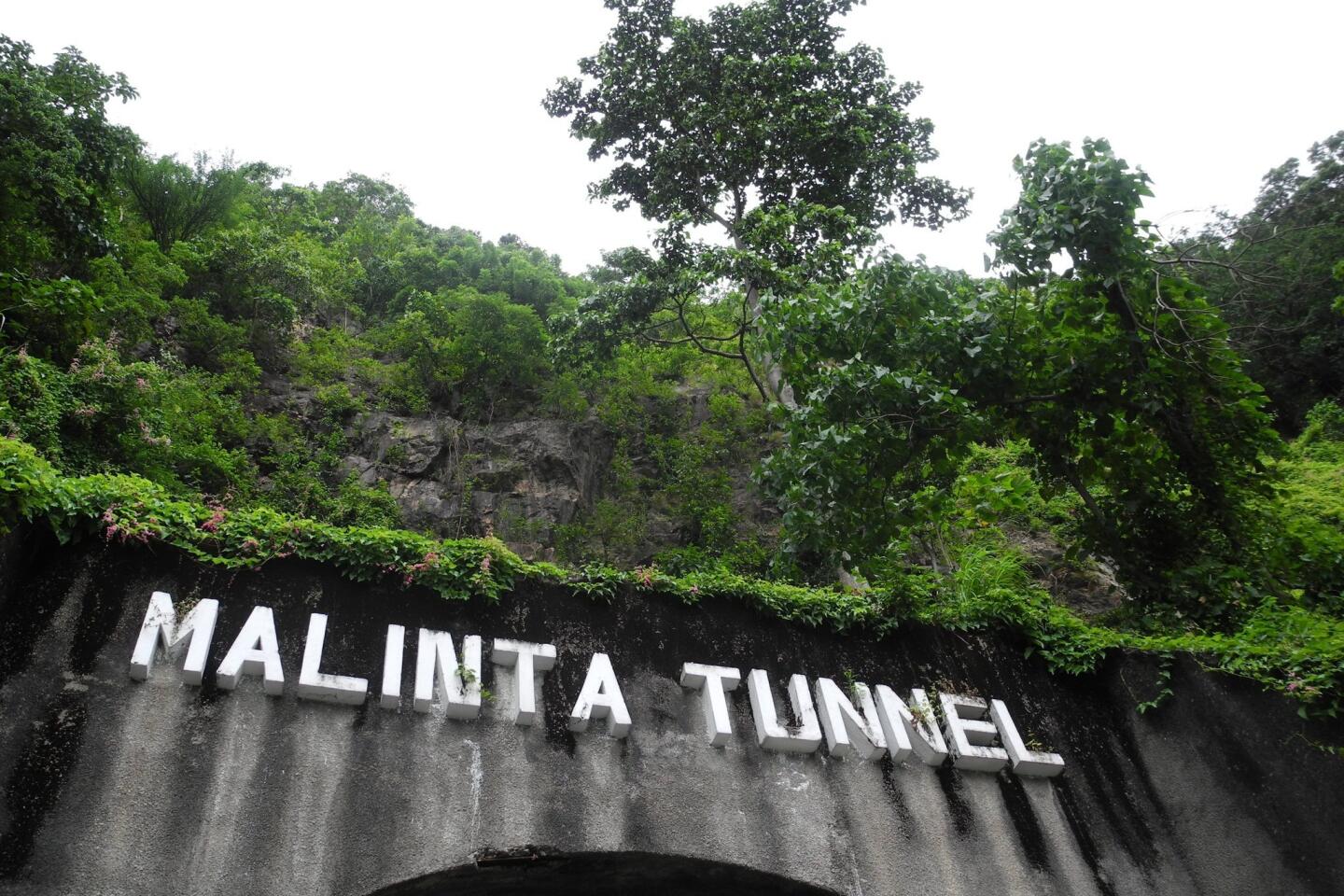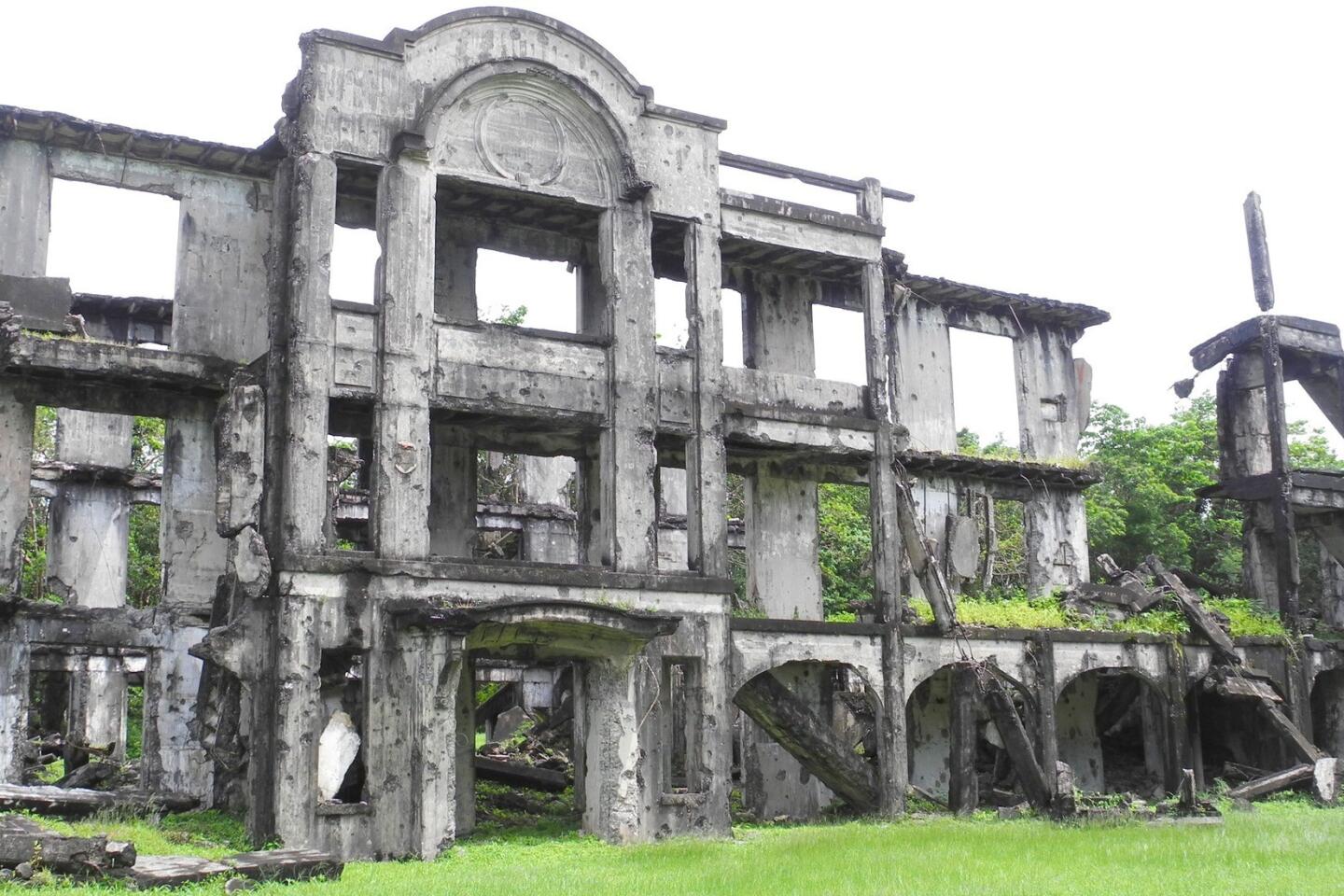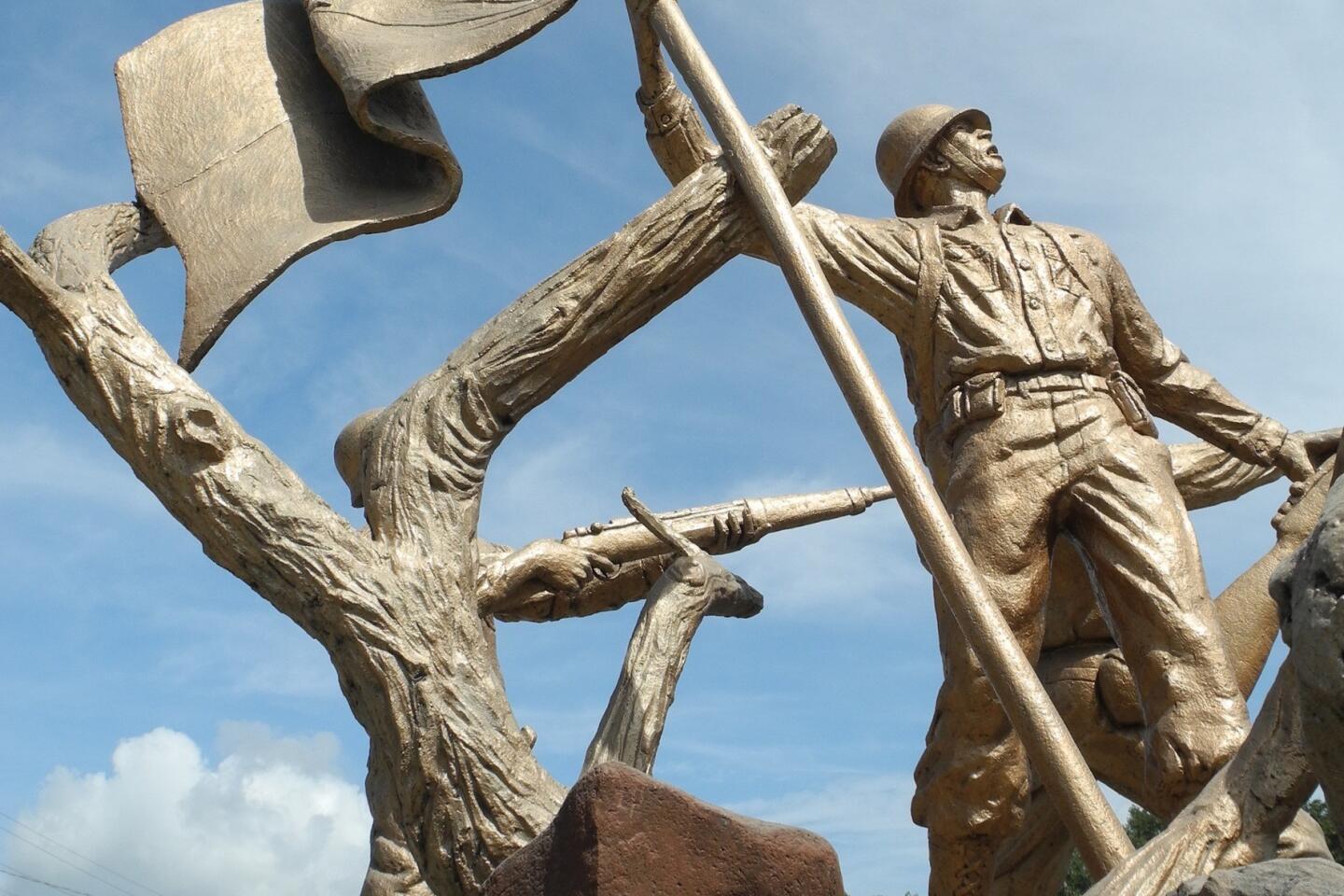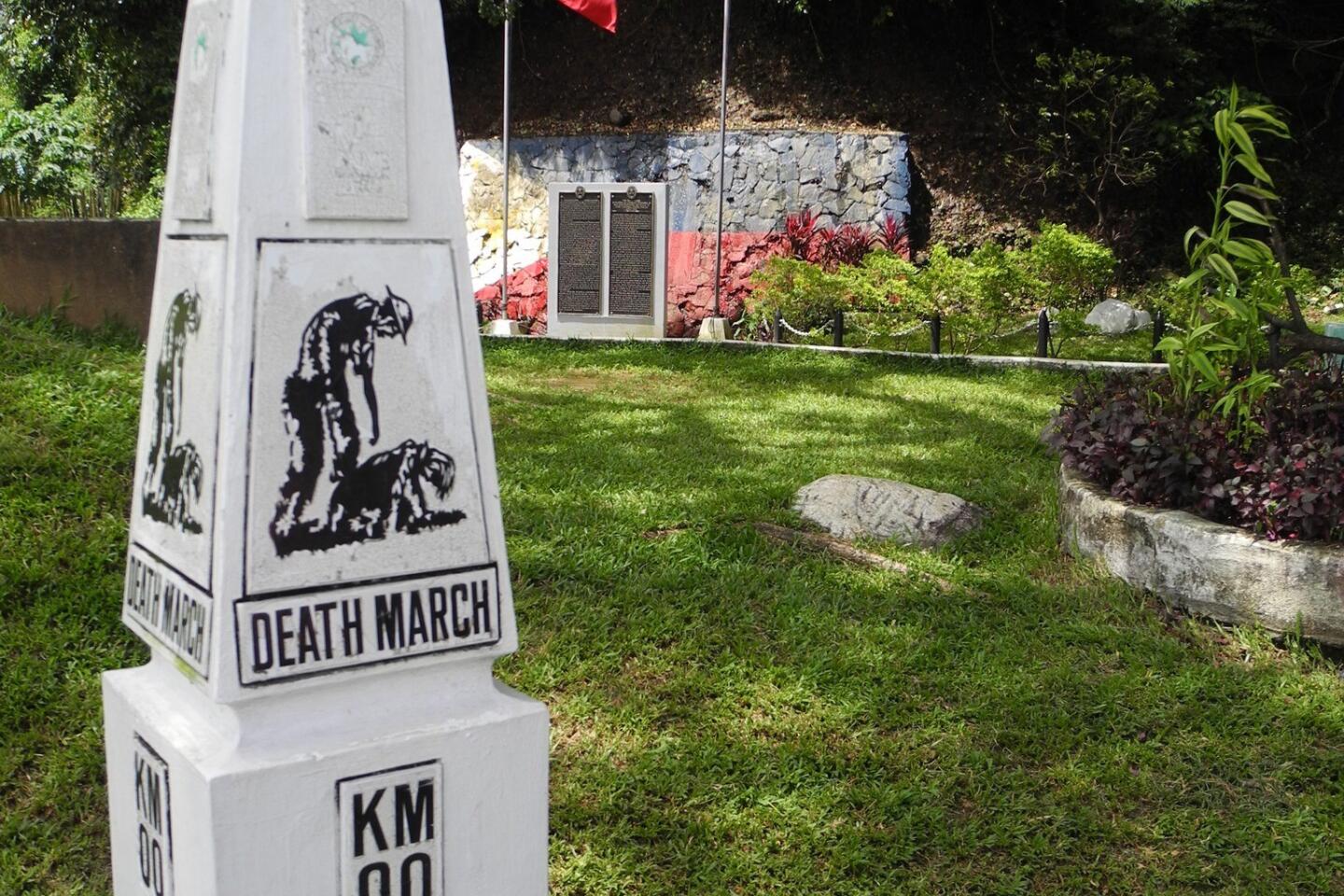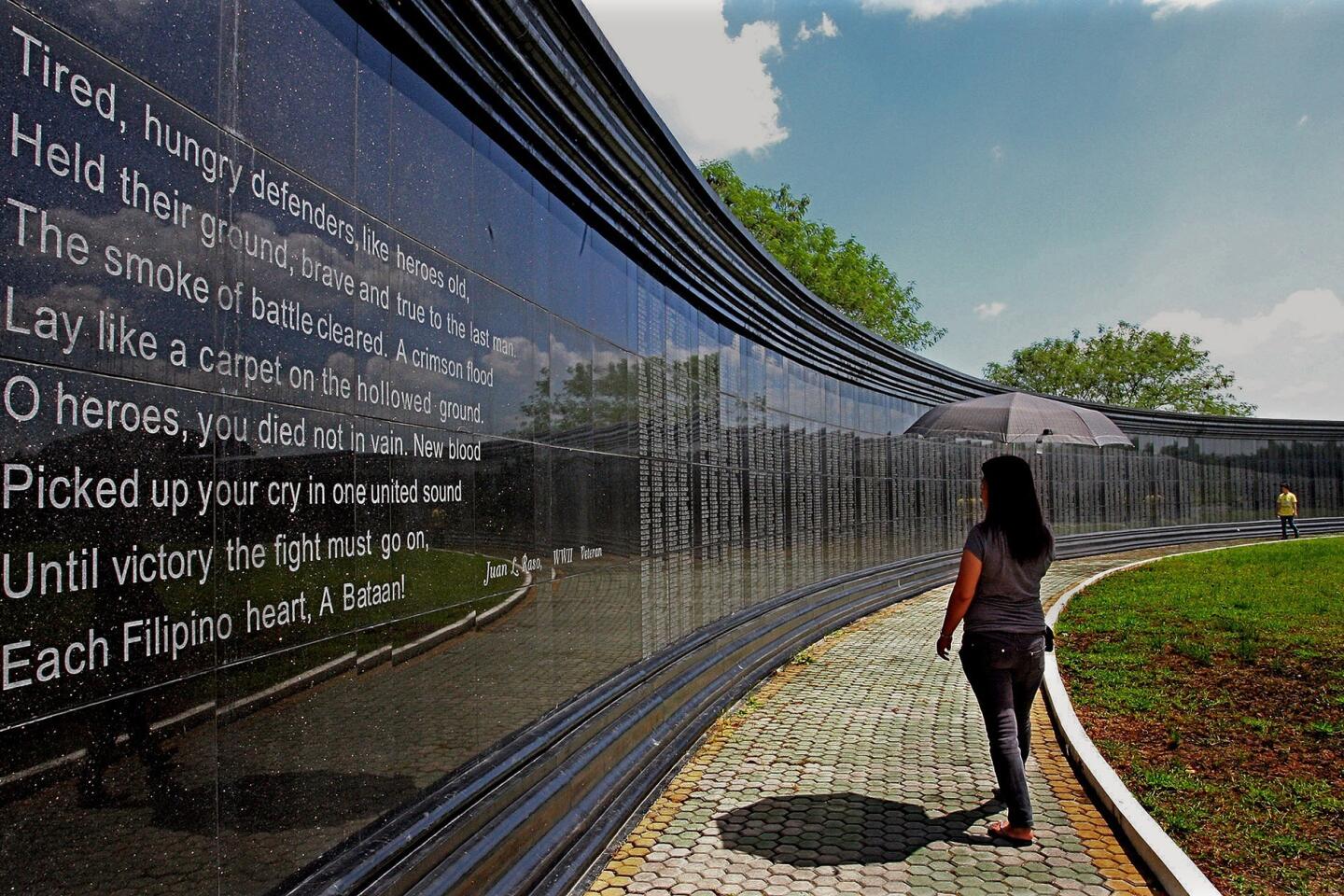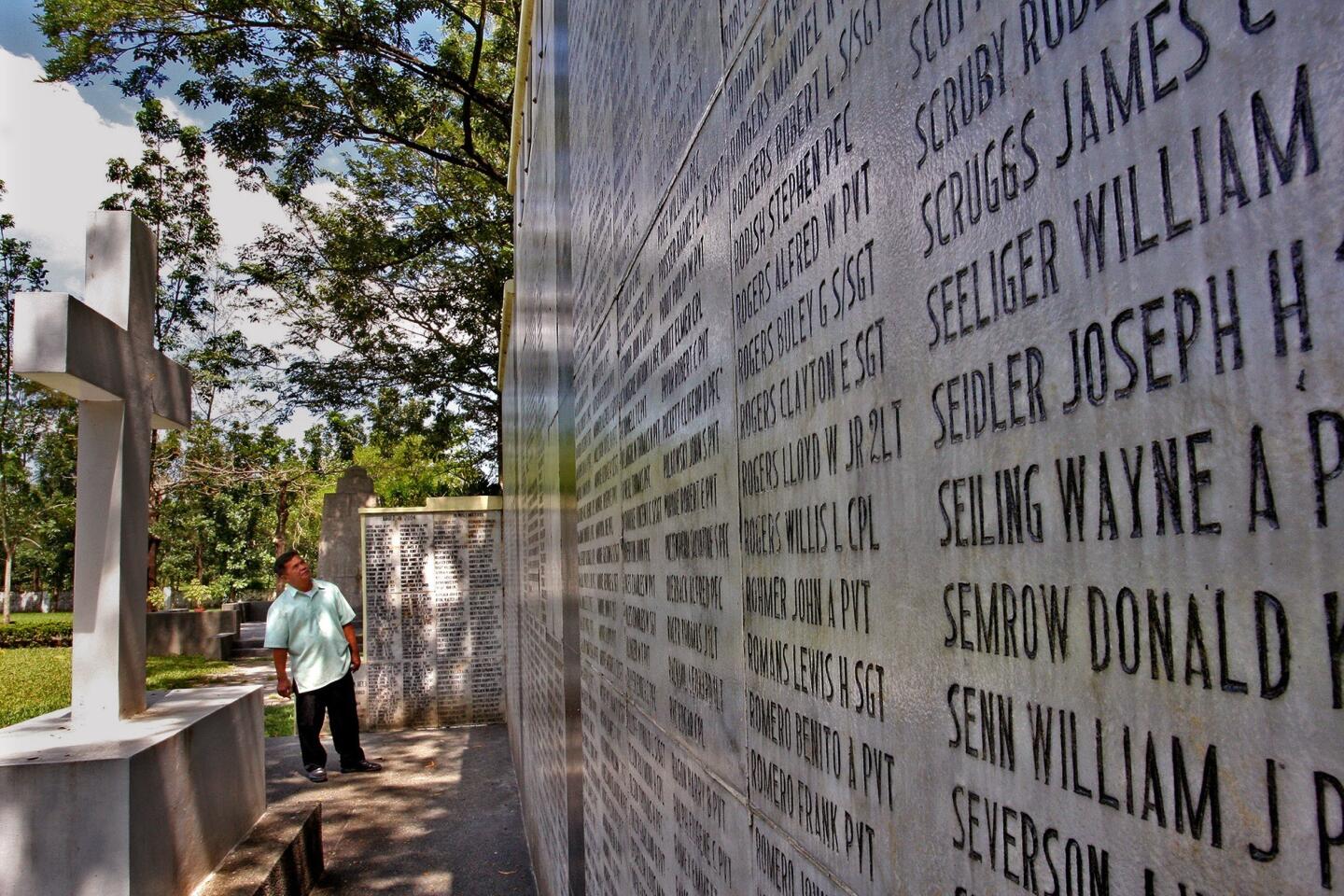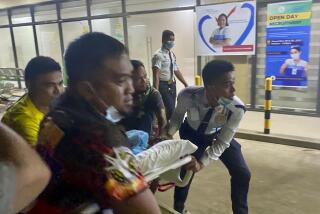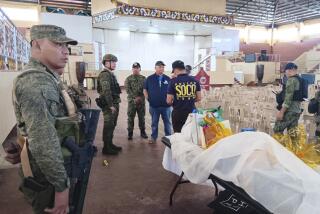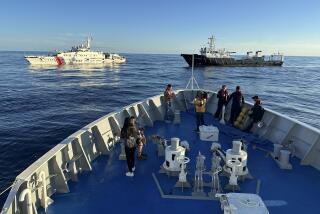Philippines travel: Courage and legacy
BALANGA, Philippines — The school day at Balanga Elementary on the Bataan Peninsula was winding down, and children poured from the classrooms into the stifling afternoon heat.
Behind their classrooms, they played around the statutes of grim-faced U.S. and Japanese officers. This improbably placed monument memorializes the surrender of thousands of U.S. and Filipino troops in the spring of 1942. By giving up, Gen. Edward King, commander of the forces on Bataan and one of the men depicted here, hoped his starving, sick troops would be spared further agony. “You have nothing to be ashamed of,” he told them.
The happy cries of kids freed from the classroom told me they didn’t yet understand what had happened here. When they learned the history, I hoped they wouldn’t be as dismayed by their ignorance as I had been by mine.
As we returned to the highway along which Filipino and American soldiers marched, without food, without water, without medical help, I also hoped the kids would remember this tragedy with more pride than sorrow.
That wouldn’t be easy, but, then, little about the Philippines is.
When you think of the 7,000-island nation in Southeast Asia — and, really, as a traveler, do you? — what comes to mind? Such unsettling terrorism that the State Department continues to renew a travel warning? Such grinding poverty that the country’s annual per capita income of $4,100 is almost four times less than neighboring Malaysia’s? Such profoundly dishonest shenanigans, political and otherwise, that the Hong Kong-based Political and Economic Risk Consultancy ranked it in 2011 as among the most corrupt countries in Asia?
This is a hard place to love, and this is a hard place to visit (think heat, traffic, smog). But its people are such effective ambassadors for this underdog country that I could not help but overlook its other shortcomings and fall into its arms for the second time in my life. This time, I was here to revisit World War II history on an important 70th anniversary.
In September, I returned to Manila, my onetime home, determined to understand as an adult what had eluded me as a child. The city, which also is the capital, wasn’t my primary destination, but it became a good launching point for trips to Corregidor and the Bataan Peninsula.
Manila has always played a strategic role in the life of this much-buffeted country. It sits on a large, natural deep-water harbor guarded by tadpole-shaped Corregidor, its strategic location prized by its enemies. The Bataan Peninsula sits across the bay.
Ferries to Corregidor leave early, taking tourists to this onetime penal colony. This was my second trip to the island, but, in retrospect, I am certain that my first visit was under protest. What 10-year-old wants to visit ruins of a war about which her father had said so little? I knew he had been in Manila, courtesy of the U.S. Navy, soon after its liberation, and I wasn’t sure why he chose to come back a second time for a two-year stint, this time working for the Veterans Administration (now the Department of Veterans Affairs). I thought then and for many years after that his decision was a longing for adventure of which I was an unwilling part.
On Corregidor this time, the history and the hardships began to sink in. The ferry whisks visitors 35 miles from Manila to a dock and a tour bus that took us to the high points: the batteries, where the big guns are mounted; the crumbling ruins, some of which housed soldiers, others of which contained such amenities as a swimming pool and a movie theater; the memorials to American and Filipino soldiers who fought here side by side until Gen. Jonathan Wainwright was forced to surrender a little more than 70 years ago.
The presentations by tour guide Rowena Alvarez were evenhanded, never blaming the missteps America’s leaders made, never condemning the U.S. for its “Europe first” policy. I could do that for myself. At water’s edge, the statue of Gen. Douglas MacArthur, pipe in one hand, the other raised in a farewell salute, made me blanch.
MacArthur had retired from the U.S. Army in 1937 but was recalled in July 1941 as commander of U.S. Army Forces in the Far East. In their meticulously reported book “Tears in the Darkness: The Story of the Bataan Death March and Its Aftermath,” authors Michael and Elizabeth Norman write that MacArthur had given Washington a more optimistic picture of the Philippines’ readiness for war than was warranted. Except for the Philippine Scouts, a group of elite, well-trained soldiers, most of the Filipino troops were poorly trained — told to dig foxholes, some had to ask what those were — and so ill-equipped that some were forced to don coconut husks for helmets they didn’t have.
Together with U.S. troops that shared MacArthur’s misplaced optimism, they were thrown into a war that began just eight hours after the attack on Hawaii. Like U.S. aircraft at Pearl Harbor, aircraft here, left out in the open, were nearly all destroyed by the Japanese air attack.
Soon after, Manila was declared an “open city,” meaning it was given up without a fight. U.S. troops concentrated on defending Bataan and Corregidor.
The Japanese thought they could take the Philippines in three weeks, maybe less. U.S. and Filipino forces held them off for five months. It was an amazing show of strength by soldiers weakened by disease and malnutrition, stemming from poor provisioning by military leaders.
MacArthur, meanwhile, was hunkered down in Corregidor’s Malinta Tunnel, the 831-foot-long passage that is now the site of a gripping sound-and-light show. From here, MacArthur wrote this to his sick and starving soldiers: “Help is on the way from the United States. … Thousands of troops and hundreds of planes are being dispatched. The exact time of arrival of reinforcements is unknown as they will have to fight their way through Japanese attempts against them,” the Normans reported in “Tears.”
It was, the authors say, a “Judas kiss.” Help was not on the way — at least, not then, and MacArthur knew it.
By orders of President Roosevelt, MacArthur and his family were evacuated from Corregidor to Australia in March 1942. The statue on Corregidor is inscribed with the general’s famous quote, “I shall return.” He kept his word, but it took him and his troops more than two years to fight their way back. By then, thousands of soldiers had died at the hands of their captors.
About 6,000 Japanese soldiers were killed when Corregidor was retaken in 1945. In the 1980s, the remains of the enemy fallen were cremated and returned home. Today, their onetime burial place is Corregidor’s Japanese Garden of Peace, our last stop. A 10-foot-tall Buddhist statute presides over this place of contemplation. Some say the statue is a goddess of love, but, perhaps more accurately, she is meant to suggest mercy and compassion — love’s heart.
The ferry back to Manila was very quiet.
Along the Death March
To drive Bataan’s roads, to see its landscape, is to begin to know more fully the story of the Death March. Bataan fell April 9, 1942, and the Death March began soon thereafter. Troops were assembled along the road beginning at Mariveles, then a fishing village and now a nondescript industrial city of about 100,000 at the tip of the peninsula.
The Japanese were unprepared for the huge number of prisoners, and even today, the number of POWs isn’t really known. Some say 100,000; others, 75,000. There were more Filipinos than Americans, but the Filipinos had a better chance of surviving an escape because they could blend into the villages.
What is known is that thousands who started the march didn’t complete it. Already weakened, soldiers trudged under a blazing sun. Some died of heat stroke. Others, crazed by thirst, drank from drainage ditches, which further sickened them. Still others who staggered were executed on the spot.
On our way to the start of the march, we detoured up the winding road to Mt. Samat National Shrine, near Balanga. The elevator inside the 300-foot-tall cross shimmies up to a view of the peninsula. From this vantage point, the suffocating canopy of vegetation explains much about the nightmare of its defense.
From there, we drove to Mariveles, where the nightmare deepened. Kilometer 1 of the Bataan Death March is in Mariveles, and on this day, American and Filipino flags stretched out in a breeze. Plaques nearby describe the 66-mile march. The soldiers who survived walk to a railroad station, then embarked on a three-hour “death ride by cargo train,” the plaques say. The boxcars, which could have accommodated perhaps 50 prisoners, were stuffed with three times that many. Many of them died gasping for breath.
Those who survived that torture began a final walk of nearly four miles that took them to Camp O’Donnell, a converted U.S. military facility at Capas. The Mariveles plaques describe it as “one of the most hellish concentration camps of World War II.” The Japanese, who had never ratified the Geneva Conventions on the treatment of prisoners, had said they would follow the rules but did not. Thousands of prisoners died, sometimes scores each day, at O’Donnell. Some prisoners were sent to other camps and some to slave labor camps in Japan, but in all cases, the mortality rate was as shocking as the cruelty.
Markers that tick off every kilometer of the march may understandably be the wallpaper of everyday life, but each of these obelisk-shaped mini-monuments — at two, three, eight, 10 kilometers and onward — brought a growing sense of doom because by then I understood how wildly misplaced were King’s hopes for mercy.
As we drove back to Manila, guide Edward Baguio mentioned that Americans usually mispronounce “Bataan.” It has a glottal stop — a sort of throaty stutter — between the double A’s. After spending the day here, I found the catch in the throat came naturally.
Standing together
The war’s toll is still evident in ways large and small in Manila. The walls at Ft. Santiago, a historic stronghold where the Japanese imprisoned soldiers in underground dungeons, are pocked with bullet holes from fierce fighting. Indeed, the struggle to wrest Manila from the Japanese was so intense that the city, once called the Pearl of the Orient, was nearly destroyed. In fits of fury, Japanese soldiers slaughtered as many as 100,000 residents in what became known as the Manila Massacre.
This is the Manila my father saw in 1945. It was liberated but not yet free of the horror — and maybe never would be. And it was to Manila, to my puzzlement, he chose to return 19 years later as part of the mission to administer benefits to the Filipinos who fought for the U.S.
Why return to a country that, then or now, is charitably described as a developing nation? I pondered this on a Sunday morning in the Manila American Cemetery and Memorial, honoring killed or missing soldiers from across the Pacific theater. I read some of the 36,000 names of the missing soldiers inscribed on the walls of the circular memorial, and I walked among the headstones of the more than 17,000 graves: Sol Margolis of Ohio, Aug. 2, 1942; Junior L. Jackson of Tennessee, Nov. 9, 1944; Wilson Scott of California, Nov. 12, 1944. Other markers said simply, “Here rests in honored glory a comrade in arms, known but to God.”
Filipinos fought for the United States at the hour of our greatest need. American servicemen and women gave their lives for freedom. They had stood by us. My father would stand by them. It was no more complicated than that.
In the silence of that Sunday morning, I saluted them all.
More to Read
Sign up for The Wild
We’ll help you find the best places to hike, bike and run, as well as the perfect silent spots for meditation and yoga.
You may occasionally receive promotional content from the Los Angeles Times.
